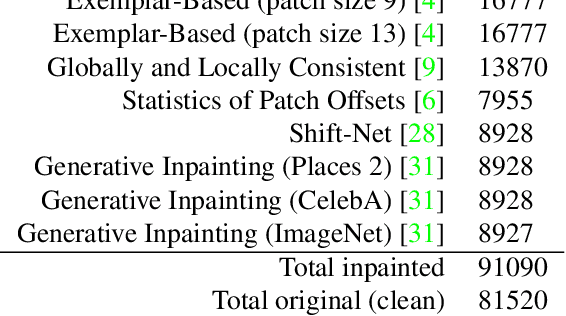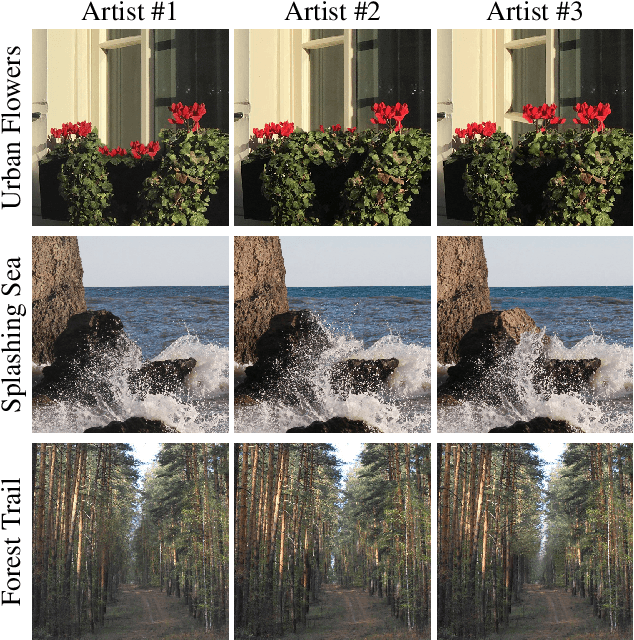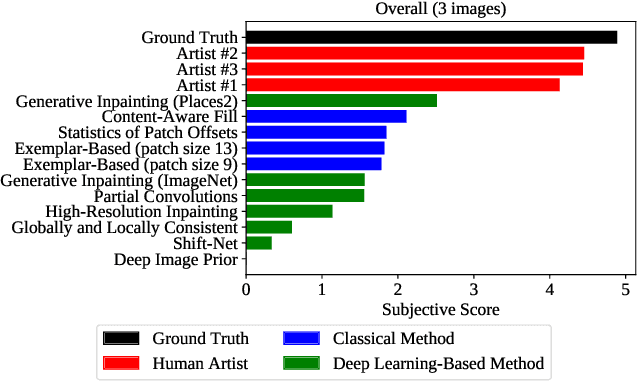Perceptually Motivated Method for Image Inpainting Comparison
Paper and Code
Jul 14, 2019



The field of automatic image inpainting has progressed rapidly in recent years, but no one has yet proposed a standard method of evaluating algorithms. This absence is due to the problem's challenging nature: image-inpainting algorithms strive for realism in the resulting images, but realism is a subjective concept intrinsic to human perception. Existing objective image-quality metrics provide a poor approximation of what humans consider more or less realistic. To improve the situation and to better organize both prior and future research in this field, we conducted a subjective comparison of nine state-of-the-art inpainting algorithms and propose objective quality metrics that exhibit high correlation with the results of our comparison.
* 8 pages, 9 figures
 Add to Chrome
Add to Chrome Add to Firefox
Add to Firefox Add to Edge
Add to Edge